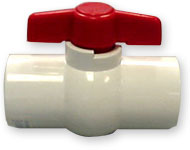Difference between revisions of "Ball valve"
(+cat, sp, projectile, etc) |
|||
| Line 5: | Line 5: | ||
Openning time can be shortened by: | Openning time can be shortened by: | ||
* Using a spring, or a pneumatic ram to actuate the valve | * Using a spring, or a pneumatic ram to actuate the valve | ||
| − | * Applying dish soap to the moving part. This lubricates it, making it faster and easier to open. Oil should | + | * Applying dish soap to the moving part. This lubricates it, making it faster and easier to open. Oil should ''not'' be used, because it can damage the seals. |
However, there is more performance to be gained by using a faster valve, such as a [[butterfly valve]], [[piston valve|piston]] or [[diaphram valve|diaphram]] valve, or a [[burst disk]]. | However, there is more performance to be gained by using a faster valve, such as a [[butterfly valve]], [[piston valve|piston]] or [[diaphram valve|diaphram]] valve, or a [[burst disk]]. | ||
[[category:valves]] | [[category:valves]] | ||
Revision as of 16:18, 24 October 2005
Ball valves open with a 90* twist of lever. They are the cheapest valve you can get, but also (typically) yield the worst performance, due to the slow opening time. The flow of a ball valve, however, is quite good due to its straight-through nature. This will tend to even out the situation in cannons with very long barrels and/or heavy projectiles (and thus long barrel dwell times).
Openning time can be shortened by:
- Using a spring, or a pneumatic ram to actuate the valve
- Applying dish soap to the moving part. This lubricates it, making it faster and easier to open. Oil should not be used, because it can damage the seals.
However, there is more performance to be gained by using a faster valve, such as a butterfly valve, piston or diaphram valve, or a burst disk.
